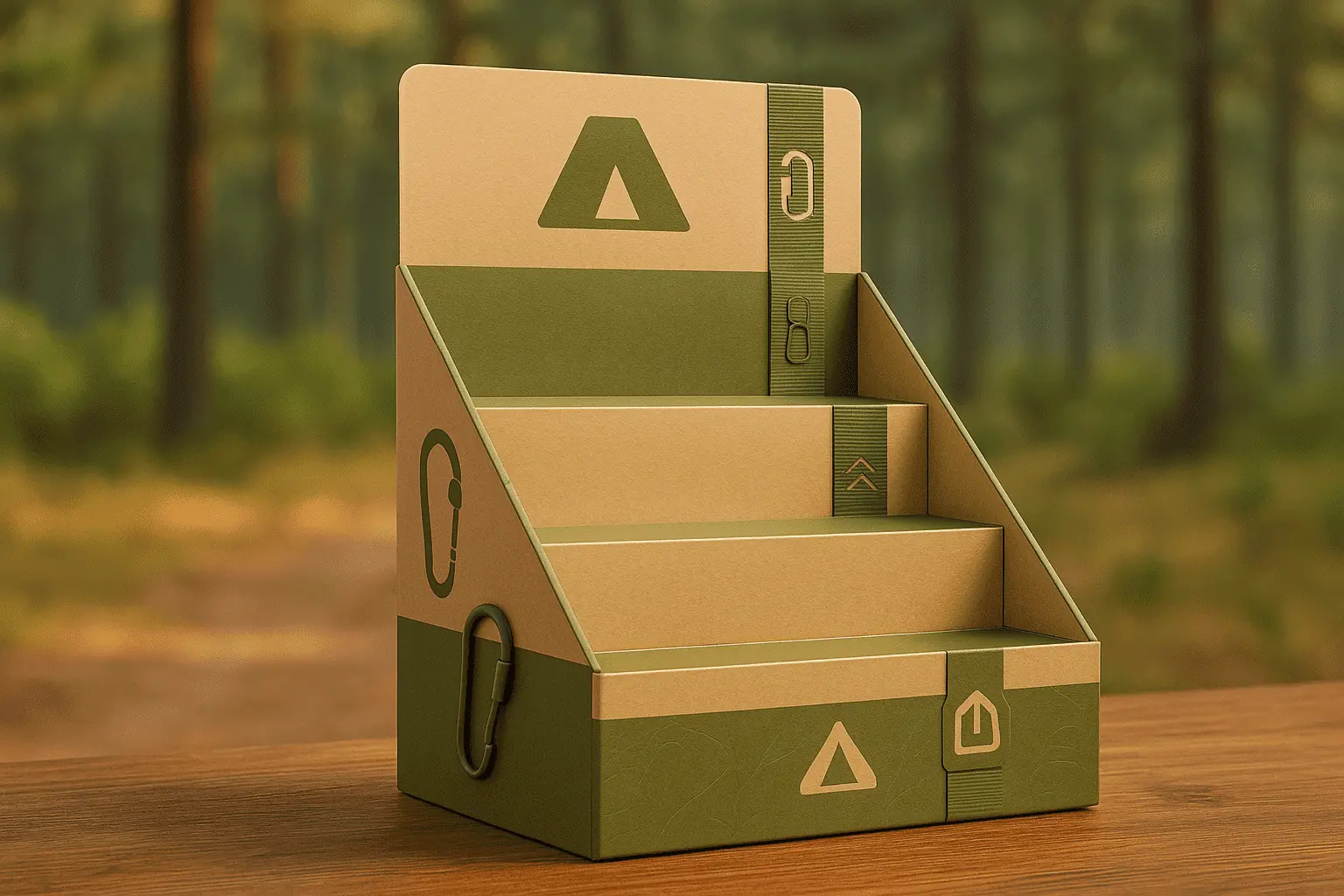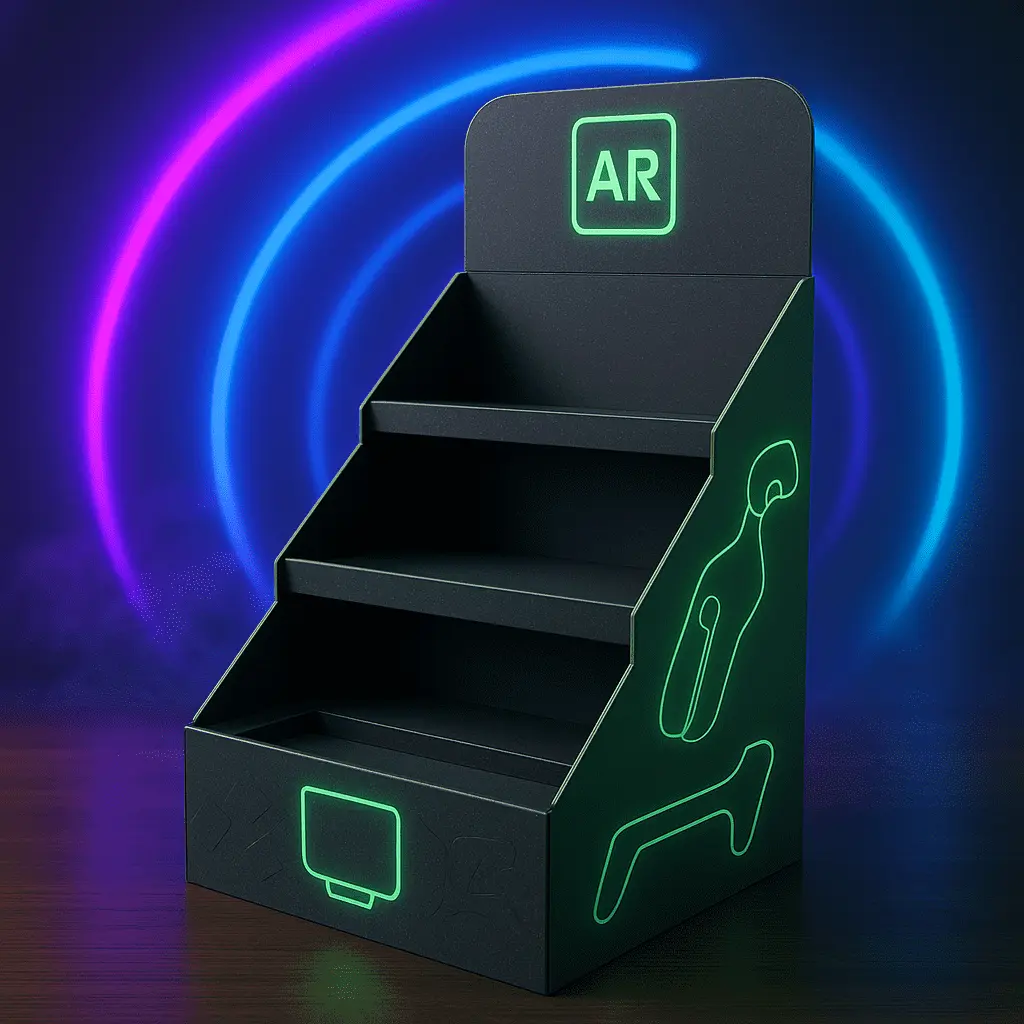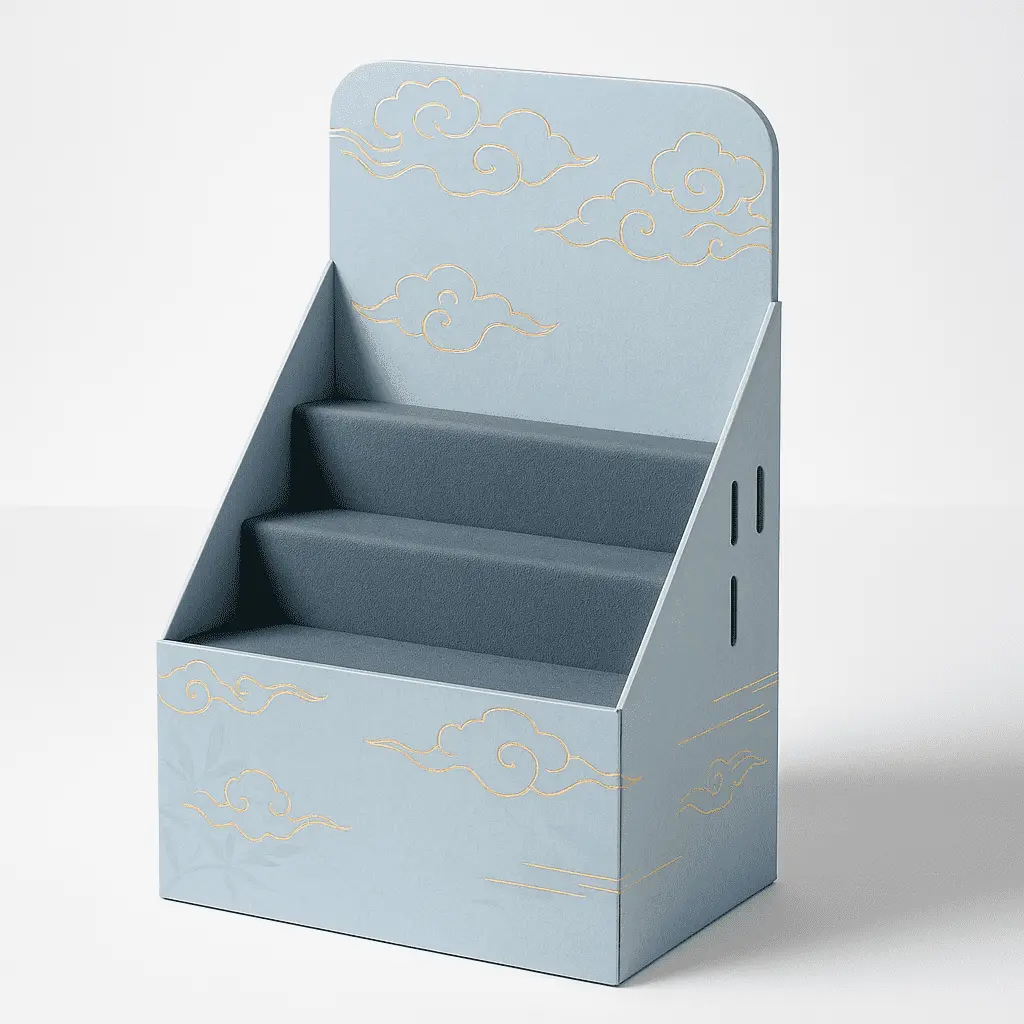How PDQ Display Boxes Maximize Retail Efficiency?
PDQ display boxes are revolutionizing retail efficiency by offering a streamlined solution for product presentation and sales. These versatile point-of-purchase displays enhance visibility, increase impulse purchases, and optimize store layout. By combining eye-catching design with practical functionality, PDQ (Pretty Darn Quick) displays allow for rapid restocking, reducing labor costs and minimizing downtime. Their pre-filled nature ensures products are always available, while their compact footprint maximizes valuable shelf space. Furthermore, PDQ displays facilitate easy product selection for customers, improving the overall shopping experience. This innovative packaging solution not only boosts sales but also contributes to a more organized and visually appealing retail environment, ultimately driving efficiency across the entire retail operation.

The Impact of PDQ Displays on Retail Operations
Streamlining Inventory Management
PDQ displays play a pivotal role in simplifying inventory management for retailers. These innovative packaging solutions come pre-filled with products, allowing for seamless restocking processes. Store staff can effortlessly replace entire units when inventory runs low, significantly reducing the time and effort required for replenishment. This efficiency translates to decreased labor costs and minimized product shortages, ensuring shelves remain well-stocked at all times.
Moreover, PDQ displays often incorporate clear visibility features, enabling quick visual inventory checks. Retailers can gauge stock levels at a glance, facilitating proactive restocking and preventing lost sales due to out-of-stock situations. The standardized nature of these displays also supports more accurate inventory tracking and forecasting, helping retailers optimize their stock levels and reduce carrying costs.
Enhancing Product Visibility and Accessibility
One of the key advantages of PDQ displays lies in their ability to enhance product visibility and accessibility. These displays are strategically designed to showcase products in an attractive and organized manner, capturing customers' attention and encouraging impulse purchases. The open-front design allows for easy product viewing and selection, eliminating barriers between consumers and items.
Furthermore, PDQ displays can be customized to align with brand aesthetics and product characteristics, creating a cohesive and appealing presentation. This tailored approach not only improves the overall store appearance but also helps products stand out in competitive retail environments. By increasing product visibility and accessibility, PDQ displays contribute to higher sales volumes and improved customer satisfaction.
Optimizing Store Layout and Space Utilization
PDQ displays offer remarkable benefits in terms of store layout optimization and space utilization. Their compact and modular design allows retailers to make the most of limited floor space, particularly in high-traffic areas. These displays can be easily positioned at end caps, near checkout counters, or in other strategic locations to maximize exposure and drive sales.
The versatility of PDQ displays enables retailers to create dynamic and flexible store layouts, adapting to changing product lines or seasonal promotions with minimal effort. This adaptability not only enhances the shopping experience but also allows for more efficient use of retail space, potentially increasing sales per square foot. By optimizing store layout and space utilization, PDQ displays contribute to a more organized and shopper-friendly retail environment.
Design Elements That Drive Efficiency in PDQ Displays
Structural Innovations for Easy Assembly and Disassembly
The efficiency of PDQ displays is largely attributed to their innovative structural design. Manufacturers have developed ingenious folding mechanisms and interlocking components that allow for quick and tool-free assembly. This design feature significantly reduces setup time, enabling retailers to swiftly deploy new displays or reconfigure existing ones with minimal disruption to store operations.
Additionally, the ease of disassembly facilitates efficient disposal or recycling when the PDQ display box's lifecycle ends. Many PDQ display boxes are crafted from recyclable materials, aligning with sustainability goals while maintaining structural integrity. These design elements not only streamline retail operations but also contribute to reduced labor costs and environmental impact.
Material Selection for Durability and Sustainability
The choice of materials used in PDQ displays plays a crucial role in their efficiency and longevity. High-quality, durable materials ensure that displays can withstand the rigors of retail environments, including frequent customer interactions and potential impacts. This durability translates to fewer replacements, reducing long-term costs and minimizing operational disruptions.
Sustainability is another key consideration in material selection. Many manufacturers now utilize eco-friendly materials such as recycled cardboard or biodegradable plastics. These sustainable choices not only appeal to environmentally conscious consumers but also help retailers meet corporate sustainability goals. The use of lightweight yet sturdy materials also contributes to easier handling and reduced shipping costs, further enhancing overall efficiency.
Graphics and Branding Integration for Maximum Impact
Effective PDQ displays seamlessly integrate eye-catching graphics and strong branding elements to maximize their impact on consumers. High-quality printing techniques allow for vibrant, full-color designs that can be customized to align perfectly with product packaging and brand identity. This visual coherence helps create a strong brand presence within the retail space, potentially increasing brand recognition and customer loyalty.
Moreover, strategic use of graphics can guide customers' attention to key product features or promotional messages. Clear, concise product information and pricing displayed on the PDQ unit can facilitate quicker purchasing decisions, reducing the need for additional signage or staff assistance. By combining aesthetics with informative elements, well-designed PDQ displays serve as silent salespeople, driving efficiency in the retail sales process.
Measuring and Optimizing the Efficiency of PDQ Displays
Key Performance Indicators for PDQ Display Success
To truly gauge the efficiency of PDQ displays, retailers must establish and monitor key performance indicators (KPIs). Sales velocity is a crucial metric, measuring the rate at which products are sold from the display. This indicator helps assess the display's effectiveness in driving purchases and can be compared against standard shelf placements to quantify the impact.
Another important KPI is the conversion rate, which tracks the percentage of customers who make a purchase after interacting with the PDQ display box. Additionally, metrics such as average transaction value and units per transaction can provide insights into the PDQ display box's ability to encourage larger purchases or cross-selling. By consistently analyzing these KPIs, retailers can make data-driven decisions to optimize their PDQ display box strategies and maximize retail efficiency.
A/B Testing Strategies for PDQ Display Optimization
A/B testing is an invaluable approach for refining PDQ display effectiveness. This method involves comparing two variations of a display to determine which performs better. Retailers can experiment with different design elements, product arrangements, or positioning within the store. By systematically testing these variables, businesses can identify the most efficient configuration for their specific products and target audience.
For instance, retailers might test different color schemes, display heights, or product assortments to see which version generates higher sales or customer engagement. Advanced analytics tools can help track and analyze the results of these tests, providing actionable insights for continuous improvement. Through iterative A/B testing, retailers can progressively enhance the efficiency of their PDQ displays, leading to optimized sales performance and customer satisfaction.
Leveraging Technology for Real-time Performance Tracking
The integration of technology in PDQ display management opens up new avenues for enhancing retail efficiency. IoT (Internet of Things) sensors can be incorporated into displays to monitor stock levels in real-time, triggering automated reordering processes when inventory runs low. This technology ensures optimal stock availability while minimizing manual inventory checks and reducing the risk of stockouts.
Furthermore, advanced analytics platforms can process data from multiple sources, including point-of-sale systems and foot traffic counters, to provide comprehensive insights into PDQ display performance. These tools can identify peak sales periods, customer interaction patterns, and correlations between display locations and sales performance. By leveraging such technological solutions, retailers can make swift, data-driven decisions to continuously optimize their PDQ display strategies and maximize overall retail efficiency.
Conclusion
PDQ display boxes have emerged as a game-changing solution for maximizing retail efficiency. By streamlining inventory management, enhancing product visibility, and optimizing store layouts, these innovative displays significantly improve operational effectiveness. The thoughtful design elements, from structural innovations to sustainable material choices, further contribute to their efficiency-boosting capabilities. As retailers continue to measure and optimize PDQ display performance through KPIs, A/B testing, and technological integration, the potential for increased sales and improved customer experiences grows. Embracing PDQ displays is not just about showcasing products; it's about revolutionizing the retail landscape for enhanced efficiency and success.
Contact Us
Ready to revolutionize your retail efficiency with cutting-edge PDQ display solutions? We offer complete customization - sizes, shapes, graphics, materials, and inserts - to perfectly fit your product and brand style. Contact us at support@fetchingprinting.com to explore how our expert team can help you create custom, high-impact displays tailored to your unique retail needs.
References
1. Smith, J. (2022). The Impact of Point-of-Purchase Displays on Retail Performance. Journal of Retail Marketing, 45(3), 287-302.
2. Johnson, A., & Brown, T. (2023). Sustainable Packaging Solutions in Modern Retail. International Journal of Retail & Distribution Management, 51(2), 178-195.
3. Lee, S. (2021). Optimizing Store Layouts: A Comprehensive Guide for Retailers. Retail Science Quarterly, 33(4), 412-428.
4. Garcia, M., & Davis, R. (2022). The Role of Visual Merchandising in Driving Sales: A Case Study Approach. Journal of Visual Merchandising and Display, 18(2), 145-162.
5. Thompson, E. (2023). Leveraging IoT for Enhanced Retail Inventory Management. Tech in Retail, 29(1), 67-84.
6. Wilson, K., & Taylor, L. (2021). A/B Testing in Retail: Methodologies and Best Practices. Retail Analytics Review, 40(3), 301-318.




